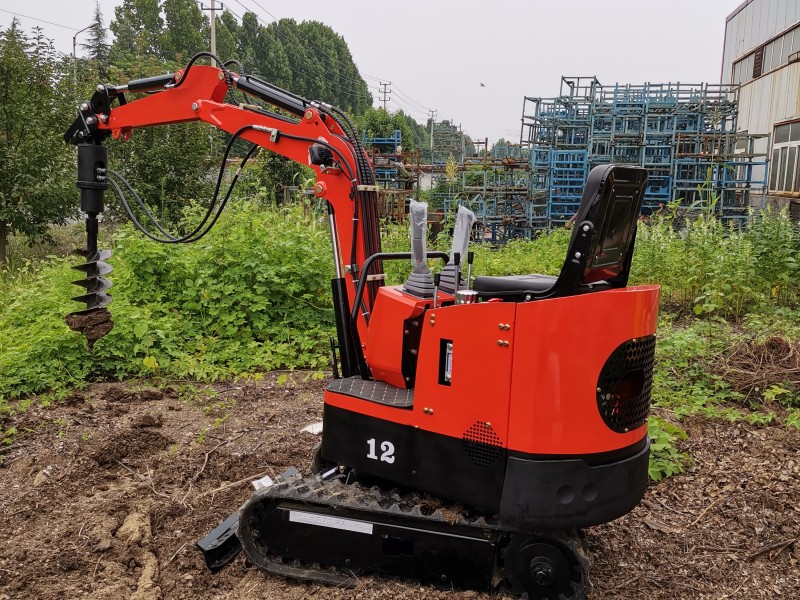When discussing excavators,particularly a 1.5-ton model,it's essential to understand what"lifting capacity"means and how it varies based on several factors.The lifting capacity of an excavator refers to the maximum weight it can safely lift and manipulate.For a 1.5-ton excavator,this capacity typically ranges from approximately 1,500 to 2,000 kg(or about 3,300 to 4,400 lbs),but this is influenced by various operational conditions and configurations.
Key Factors Influencing Lifting Capacity
Operating Radius:The lifting capacity of an excavator decreases as the distance from the center of the machine increases.This is due to the leverage effect;the further the load is from the pivot point(the center of the machine),the more difficult it is to lift.For example,an excavator may be able to lift 1.5 tons directly in front of it but significantly less if the load is extended out to the side.
Boom Angle:The angle of the boom also affects lifting capacity.A boom that is raised at a steep angle will have a reduced lifting capacity compared to one that is more horizontal.Operators must be aware of this when positioning the boom to lift loads.
Ground Conditions:The type of ground the excavator is operating on can impact its stability.Soft or uneven ground can lead to tipping or sinking,reducing the effective lifting capacity.Operators often need to assess the site conditions before lifting heavy loads.
Counterweight and Configuration:Some excavators are designed with additional counterweights to improve stability and lifting capacity.The configuration of attachments,such as buckets or grapples,can also affect how much weight can be safely lifted.
Manufacturer Specifications:Each excavator model has specific lifting capacities outlined by the manufacturer.These specifications are determined through rigorous testing and provide a safe guideline for operators.It's crucial to consult the operator’s manual or manufacturer’s specifications for exact figures.
Typical Lifting Capacities in Practice
For a 1.5-ton excavator,the lifting capacity can generally be categorized as follows:
Directly in Front:When lifting directly in front of the machine,a 1.5-ton excavator can typically lift close to its rated capacity of around 1.5 tons.
At Full Reach:At maximum reach,the capacity might drop significantly,sometimes to as low as 500 kg(about 1,100 lbs),depending on the specific model and conditions.
With Attachments:Different attachments can also affect lifting capabilities.For instance,a bucket designed for digging may have a different weight capacity compared to a hydraulic thumb used for grasping objects.
Safety Considerations
Lifting operations with excavators come with inherent risks,and safety should always be a priority.Here are some essential safety tips:
Load Limits:Never exceed the manufacturer’s specified load limits.Overloading can lead to equipment failure and accidents.
Proper Rigging:Ensure loads are properly rigged and balanced.Uneven loads can cause tipping.
Communication:Maintain clear communication among operators and ground personnel.Use hand signals or radios to coordinate movements.
Site Inspection:Always inspect the site for hazards,such as overhead lines,unstable ground,or obstacles.
Training:Ensure that operators are well-trained and familiar with the specific excavator model they are using.
Conclusion
In summary,a 1.5-ton excavator can typically lift between 1,500 kg and 2,000 kg under ideal conditions.However,various factors such as operating radius,boom angle,ground conditions,and equipment configuration can significantly affect this capacity.Always refer to the manufacturer's specifications and adhere to safety protocols to ensure safe and effective lifting operations.Understanding these aspects will help operators maximize the efficiency of their equipment while minimizing risks on the job site.
